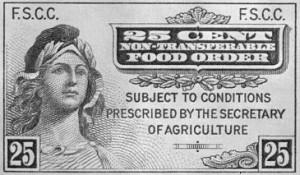Who is hungry in Virginia?

A couple of weeks ago I got an email from a local food bank asking if we knew the number of people receiving SNAP benefits (Supplemental Nutrition Assistance Program, formerly known as food stamps) in a certain locality. He was trying to estimate the “number of hungry people” in his community and figured SNAP recipients were a “reasonable surrogate” for that. His assumption makes complete sense–households receiving SNAP benefits have demonstrated a lack of financial resources, forcing them to choose between food and other necessities, like utilities.
But more importantly, he was trying to demonstrate to the members of his community that even in their relatively middle-class neighborhood people struggled with food insecurity. Given this as his goal, focusing on those receiving SNAP only provided a portion of the picture. Many of the people to walk into the food bank are not eligible for SNAP, but they are no less in need.
Who receives SNAP?
In order to be eligible to receive SNAP benefits a household must have a gross income of less than 130 percent of the Federal poverty line, AND have a disposable income–gross income minus necessary expenses such as housing, child support, and dependent care–of less than 100 percent of the Federal poverty line.
There are three basic groups who receive SNAP benefits:
- Households with children–This is the largest group of SNAP recipients. Nationally, 70 percent of individuals who received SNAP in 2012 were children or lived with one.
- Households with older adults (60 years+) or legally disabled individuals–Income from Supplemental Security Insurance and most retirement income are excluded from the income requirements making it easier for these households to qualify.
- Able-bodied adults without dependents–Only one in ten SNAP recipients are able-bodied and have no dependents. These individuals are limited to 3 months of assistance in 36 months if they are unemployed and not enrolled in job training.
Because of these regulations, localities with larger proportions of independent adults have SNAP participation rates lower than the poverty rate. In Virginia, these include Arlington, Fairfax City, and Falls Church. Likewise, localities with larger proportions of families and elderly, such as Hopewell, Emporia, and Norton, have SNAP participation rates higher than the poverty rate.
Not all who are eligible apply
Eligibility is only one pieces of the puzzle. According to the USDA, in 2011 one in five Virginians eligible for the program did not apply. The proportion is even higher when looking at the working poor where almost one-third of those eligible do not receive the benefits.
Some of these individuals may not know they are eligible. In Virginia, an independent, able-bodied adult living alone who works full time at the minimum wage has a gross income that would make it possible to qualify for SNAP, even if only for a short period of time. These individuals may not be aware that the services are available to them.
It is also possible that many of these individuals know they are eligible but choose to forgo the benefit. They may not want to accept a “hand out.” They may not want to re-file paperwork every three months where they must list and verify all their expenses and assets–much like filing ones taxes. Or they may not wish to face judgment each time they buy groceries as checkers and fellow shoppers criticize their food choices. Especially when the value of the assistance is small the additional asset may not be worth these trade off. However, these individuals are no less hungry because they opt out of food stamps.
Who is missing?
It is clear that SNAP recipients overlap with those who struggle with food insecurity, but this does not provide a full picture. According to the American Community Survey, around 1 million people in Virginia received SNAP at some point during 2012.* Roughly 1.5 million people lived at or below 130 percent of the Federal poverty line in 2012. Many of those in and just above poverty face food insecurity without the assistance of SNAP. In addition, many people above the SNAP threshold also struggle to put food on the table.
So who is missed by using SNAP as a way of thinking about hunger?
- A single woman without dependents who is being laid off for the second time in two years. Because she used SNAP for 3 months the last time she was laid off she does not qualify now.
- A father who worked overtime at his retail job during December but had his hours slashed in January. His December earnings put him above the income threshold but his January and February earnings are significantly lower. Roughly three out of ten US households do not have a consistent income from month to month.
- A single mother with one child who is working full-time at $10.10/hour. She earns too much to qualify for benefits, but only by about $11.00/week.
- The 2-parent family with two kids, who live above the SNAP thresholds, but struggle to make their mortgage payment after the primary breadwinner lost a job.
These are just a few of the faces of hunger, and each has their own story. But these are the people who may show up at that food bank with few other options. When we combine these individuals with those receiving SNAP, we get closer to estimating those who are hungry. But even this is likely an insufficient count.
* The American Community Survey tends to under report SNAP participation. According to SNAP records, 922,150 people in Virginia received benefits, on average, each month in 2012.


